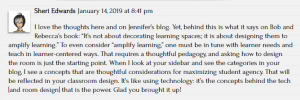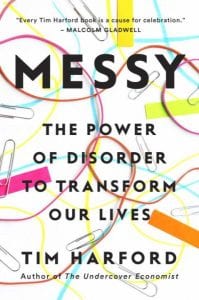A “squat, ugly, sprawling” 200,000 square foot structure, Building 20 was designed in a day and built on the MIT campus almost as fast in 1943, to house the Radiation Laboratory, a secret project during World War II. Tim Harford’s story of Building 20 resonates strongly with me.
Just the breadth of ideas that were incubated in Building 20 is mind-boggling. “It was the birthplace of the world’s’ first commercial atomic clock. One of the earliest particle accelerators was also constructed there. The iconic stop-motion photographs of a bullet passing through an apple were taken in Building 20 by Harold Edgerton. It was home to MIT’s Tech Model Railroad Club, a wellspring of hacker culture… Noam Chomsky and Morris Halle revolutionized linguistics in Building 20… a young electrical engineer named Amar Bose, dissatisfied with a piece of hi-fi equipment he had purchased, wandered … [Building 20] acoustics lab. There, he revolutionized the speaker and established the Bose Corporation.” [p 94]
One of Harford’s central assertions in Messy: The Power of Disorder to Transform Our Lives is that, in general, our society values tidiness and aesthetic beauty, yet the evidence points to those characteristics as putting a major damper on creativity. He identifies several characteristics of Building 20 that made it so effective, none of which have to do with tidiness.
The disorganized labyrinth that constituted the space was inhabited by a motley assortment of departments and saw frequent re-configurations of the space. Harford states, “[t]his absurdly inefficient way of organizing a building meant that people were constantly getting lost and wandering into places they didn’t intend to go.” [p 96]
“If you ask the veterans of MIT what a creative space looks like, one building comes to symbolize all that’s best at the university… it was known only as Building 20… squat, ugly, sprawling structure… “ [p 92] ~ Messy: The Power of Disorder to Transform Our Lives by Tim Harford
This last phrase immediately takes my mind to the Connected Learning MOOC (#CLMooc), an online collaborative community that I participate in. Each summer, this community defines a series of “makes” that participants are invited to engage in.
The makes have caused me to tear my hair out on more than one occasion. Not because someone is dictating what I need to accomplish (quite the opposite), but because I become intrigued by the challenge, and stretch myself to try new tools and technologies. Collaborators in the community act both as mentors and students.
I often encounter #failure, and have to alter my approach, or even totally start over. Additionally, the whole process is often #messy, less than “perfect,” and oh, so much fun! “Making” also broadens my view, and deepens my belief in “failure” as a great teacher.
Harford ends his ode to Building 20 by saying, “… the building’s inhabitants felt confident that they had the authority… to make changes, even messy changes.” [p 98]
Which brings us back to the ownership and agency piece I touched on in my last post. As a #PBL educator, I am accustomed to a lot of chaos. Some of the most creative ideas students have had stemmed from tangential and somewhat off-topic discussions. There has been trial-and-error. And frustration. And disagreement. And, yes, failure. These are all #realworld situations the students are learning to navigate and manage.
Do I ever want to intervene? Yes. And I do on occasion. It is most often the student(s) who request my help, but I also intervene at other time when I feel it is necessary. I don’t offer a solution, but rather ask open-ended questions that refocus the students’ thinking on what they are trying to achieve.
Although my classroom is not Building 20, it is nonetheless developing 21st century skills, including collaboration, creativity, critical thinking and (better) communication. In other words, #Meliora students are learning what the #realworld is all about.


